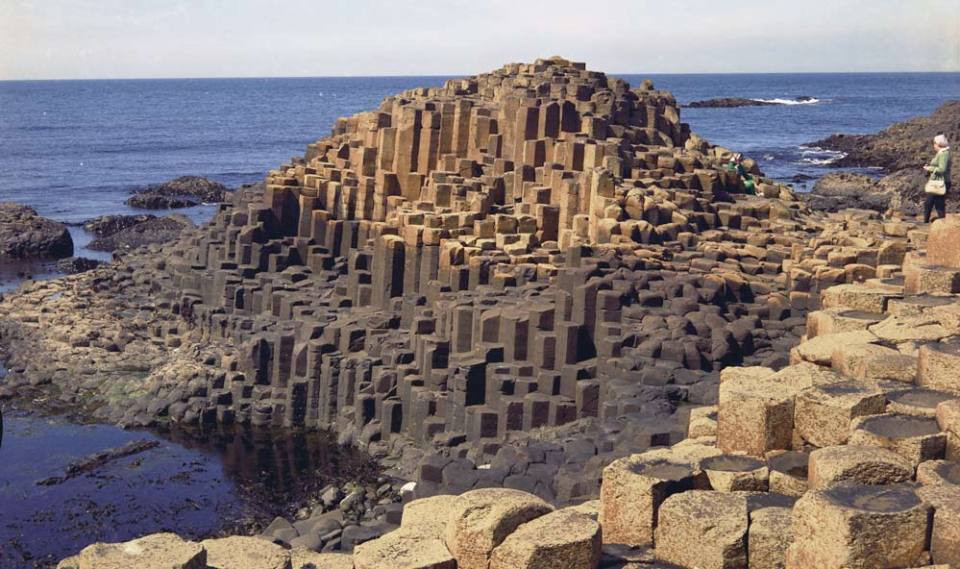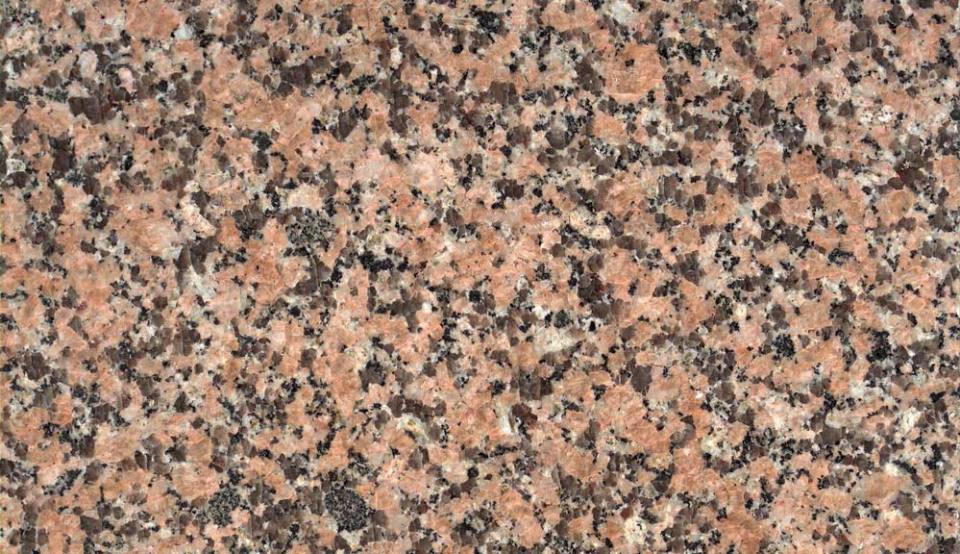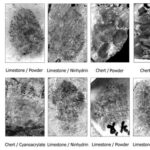Are you curious about how many types of rocks there are in the world and how they can transform your landscape? At rockscapes.net, we can help you explore the diverse world of rocks and discover the ideal stone elements to elevate your landscape design. We help you understand the types of rocks and their formation, allowing you to appreciate their use in residential and commercial properties.
1. What Are the Three Major Types of Rocks?
The three major types of rocks are igneous, sedimentary, and metamorphic. These categories are based on how the rocks were formed.
1.1 Igneous Rocks: Born from Fire
Igneous rocks are formed from the cooling and solidification of magma or lava. Magma is molten rock found beneath the Earth’s surface, while lava is magma that has erupted onto the surface.
- Extrusive Igneous Rocks: These rocks are formed when lava cools quickly on the Earth’s surface. This rapid cooling results in small crystals, giving the rock a fine-grained texture. An example of an extrusive igneous rock is basalt, often found in columnar formations like the Giant’s Causeway in Northern Ireland.
 Giant's Causeway basalt columns formed from cooled lava
Giant's Causeway basalt columns formed from cooled lava
- Intrusive Igneous Rocks: These rocks are formed when magma cools slowly beneath the Earth’s surface. The slow cooling process allows for the formation of large, visible crystals, resulting in a coarse-grained texture. Granite is a common example of an intrusive igneous rock, known for its durability and use in countertops and building materials.
1.2 Sedimentary Rocks: Layers of Time
Sedimentary rocks are formed from the accumulation and cementation of sediments, such as mineral grains, rock fragments, and organic material. These sediments are typically transported by wind, water, or ice and deposited in layers.
- Clastic Sedimentary Rocks: These rocks are formed from the accumulation of broken pieces of other rocks and minerals. Examples include sandstone, shale, and conglomerate. Sandstone, for instance, is composed of cemented sand grains and is often used in paving and building.
- Chemical Sedimentary Rocks: These rocks are formed from the precipitation of minerals from water. Examples include limestone and rock salt. Limestone, primarily composed of calcium carbonate, is widely used in construction and landscaping.
- Organic Sedimentary Rocks: These rocks are formed from the accumulation of organic matter, such as plant and animal remains. Coal is a prime example of an organic sedimentary rock, formed from the compressed remains of ancient plants.
1.3 Metamorphic Rocks: Transformed by Pressure and Heat
Metamorphic rocks are formed when existing rocks are transformed by heat, pressure, or chemical reactions. This process alters the mineral composition and texture of the original rock.
- Foliated Metamorphic Rocks: These rocks have a layered or banded appearance due to the alignment of minerals under pressure. Examples include slate and gneiss. Slate, formed from shale, is often used for roofing and paving due to its durability and layered structure.
- Non-Foliated Metamorphic Rocks: These rocks do not have a layered appearance. Examples include marble and quartzite. Marble, formed from limestone, is prized for its beauty and is commonly used in sculptures and decorative elements.
2. How Many Specific Types of Rocks Are There?
Geologists estimate that there are thousands of different types of rocks, each with unique characteristics and compositions. The exact number is difficult to determine due to variations in mineral content, texture, and formation processes.
2.1 Diversity within Igneous Rocks
The diversity within igneous rocks is vast, influenced by factors such as the composition of the magma or lava, the rate of cooling, and the presence of gases and water.
- Granite: A coarse-grained, intrusive igneous rock composed primarily of quartz, feldspar, and mica. It is known for its durability and is used in countertops, building facades, and monuments.
 Peterhead granite sample with feldspar, quartz and biotite mica
Peterhead granite sample with feldspar, quartz and biotite mica
- Basalt: A fine-grained, extrusive igneous rock composed primarily of plagioclase feldspar and pyroxene. It is commonly used in paving, landscaping, and construction due to its resistance to weathering.
- Obsidian: A volcanic glass formed from rapidly cooled lava. It has a smooth, glassy texture and is often used in jewelry and decorative objects.
- Pumice: A light-colored, porous volcanic rock formed from frothy lava. It is used as an abrasive and in lightweight concrete.
2.2 Variety in Sedimentary Rocks
Sedimentary rocks exhibit a wide range of characteristics depending on the source of the sediments, the transport mechanisms, and the depositional environment.
- Sandstone: A clastic sedimentary rock composed of cemented sand grains, typically quartz. It is used in building, paving, and landscaping.
- Limestone: A chemical sedimentary rock composed primarily of calcium carbonate. It is used in construction, cement production, and agriculture.
- Shale: A fine-grained, clastic sedimentary rock composed of clay minerals. It is used in brickmaking, cement production, and as a source of natural gas.
- Conglomerate: A clastic sedimentary rock composed of rounded pebbles and gravel cemented together. It is used in landscaping and as a decorative stone.
2.3 Range in Metamorphic Rocks
Metamorphic rocks are transformed under varying conditions of temperature and pressure, resulting in a diverse array of textures and mineral compositions.
- Marble: A non-foliated metamorphic rock formed from limestone. It is prized for its beauty and is used in sculptures, countertops, and flooring.
- Slate: A foliated metamorphic rock formed from shale. It is used in roofing, paving, and blackboards.
- Gneiss: A foliated metamorphic rock with a banded appearance, formed from granite or sedimentary rocks. It is used in building, paving, and landscaping.
- Quartzite: A non-foliated metamorphic rock formed from sandstone. It is extremely hard and durable, making it suitable for countertops and paving.
3. What Factors Determine the Different Types of Rocks?
Several factors determine the different types of rocks, including their mineral composition, texture, and formation process.
3.1 Mineral Composition
The mineral composition of a rock is determined by the types and proportions of minerals present. Different minerals have different chemical compositions and physical properties, which influence the overall characteristics of the rock.
- Quartz: A common mineral found in many types of rocks, including granite, sandstone, and quartzite. It is known for its hardness and resistance to weathering.
- Feldspar: A group of minerals that are abundant in igneous and metamorphic rocks, such as granite and gneiss. They contribute to the rock’s color and texture.
- Mica: A group of sheet-like minerals found in igneous and metamorphic rocks, such as granite and slate. They give the rock a layered or platy appearance.
- Calcite: The primary mineral in limestone and marble. It is relatively soft and reacts with acid.
3.2 Texture
The texture of a rock refers to the size, shape, and arrangement of its mineral grains or other constituents. Texture can provide valuable information about the rock’s formation history.
- Coarse-Grained: Rocks with large, visible crystals, such as granite, formed from slow cooling.
- Fine-Grained: Rocks with small, microscopic crystals, such as basalt, formed from rapid cooling.
- Porphyritic: Rocks with large crystals (phenocrysts) embedded in a fine-grained matrix, indicating a two-stage cooling process.
- Glassy: Rocks with a smooth, glass-like texture, such as obsidian, formed from extremely rapid cooling.
3.3 Formation Process
The formation process of a rock is a primary factor in determining its type. Igneous rocks are formed from the cooling of magma or lava, sedimentary rocks from the accumulation of sediments, and metamorphic rocks from the transformation of existing rocks.
- Cooling Rate: The rate at which magma or lava cools affects the size of the crystals in igneous rocks. Slow cooling results in large crystals, while rapid cooling results in small crystals or glassy textures.
- Sediment Source: The source of the sediments in sedimentary rocks influences their composition and texture. Sediments can be derived from weathered rocks, mineral grains, or organic material.
- Metamorphic Grade: The degree of heat and pressure during metamorphism affects the mineral composition and texture of metamorphic rocks. High-grade metamorphism results in significant changes, while low-grade metamorphism produces more subtle alterations.
4. Why Is It Important to Know the Different Types of Rocks?
Knowing the different types of rocks is essential for various reasons, including understanding Earth’s history, selecting appropriate materials for construction and landscaping, and appreciating the natural beauty of rocks.
4.1 Understanding Earth’s History
Rocks provide valuable clues about Earth’s history, including past geological events, climate changes, and the evolution of life.
- Fossils: Sedimentary rocks often contain fossils of ancient plants and animals, providing evidence of past life forms and ecosystems.
- Rock Layers: The layering of sedimentary rocks can reveal the sequence of events that occurred over time, such as periods of erosion, deposition, and uplift.
- Igneous Intrusions: Intrusive igneous rocks can provide information about the timing and nature of volcanic activity in the past.
- Metamorphic Changes: Metamorphic rocks can indicate the intensity and duration of tectonic events, such as mountain building. According to research from Arizona State University’s School of Earth and Space Exploration, in July 2025, metamorphic rocks provide key evidence of past tectonic activity and crustal deformation.
4.2 Selecting Appropriate Materials
Different types of rocks have different physical and chemical properties that make them suitable for various applications in construction, landscaping, and other industries.
- Durability: Granite and quartzite are highly durable and resistant to weathering, making them ideal for countertops, paving, and building facades.
- Workability: Sandstone and limestone are relatively soft and easy to work with, making them suitable for carving, shaping, and building.
- Aesthetics: Marble and slate are prized for their beauty and are used in decorative elements, flooring, and roofing.
- Availability: The local availability of certain types of rocks can influence their use in construction and landscaping.
4.3 Appreciating Natural Beauty
Rocks are a fundamental part of the natural landscape, and understanding their formation and characteristics can enhance our appreciation of their beauty.
- Color and Texture: The diverse colors and textures of rocks can create stunning visual effects in natural landscapes and gardens.
- Unique Formations: Geological processes can create unique rock formations, such as arches, canyons, and cliffs, that are awe-inspiring to behold.
- Mineral Crystals: The presence of mineral crystals in rocks can add sparkle and interest to their appearance.
- Geological History: Knowing the geological history of a region can deepen our understanding and appreciation of the rocks and landscapes around us.
5. How Are Rocks Used in Landscaping?
Rocks are versatile elements in landscaping, offering both functional and aesthetic benefits. They can be used to create retaining walls, pathways, water features, and decorative accents.
5.1 Retaining Walls
Rocks can be used to build retaining walls that provide support for slopes, prevent erosion, and create level areas in a landscape.
- Natural Stone Walls: These walls are constructed from natural stones, such as granite, sandstone, or limestone, and can be dry-stacked or mortared.
- Gabion Walls: These walls are made from wire baskets filled with rocks, providing a cost-effective and durable retaining solution.
- Boulder Walls: These walls are constructed from large boulders, creating a natural and rugged appearance.
5.2 Pathways
Rocks can be used to create pathways that provide access through a landscape while adding visual interest and texture.
- Flagstone Pathways: These pathways are made from large, flat stones, such as sandstone or slate, laid in a pattern or randomly.
- Gravel Pathways: These pathways are made from loose gravel or crushed stone, providing a low-maintenance and permeable surface.
- Stepping Stone Pathways: These pathways are made from individual stones spaced apart, creating a natural and informal look.
5.3 Water Features
Rocks can be used to create water features, such as waterfalls, ponds, and streams, that add tranquility and beauty to a landscape.
- Waterfalls: Rocks can be arranged to create waterfalls of varying heights and styles, adding the soothing sound of flowing water.
- Ponds: Rocks can be used to line the edges of ponds, creating a natural and attractive border.
- Streams: Rocks can be used to create meandering streams that add visual interest and provide habitat for aquatic life.
5.4 Decorative Accents
Rocks can be used as decorative accents in a landscape, adding texture, color, and visual interest.
- Rock Gardens: These gardens feature a variety of rocks and alpine plants, creating a miniature mountain landscape.
- Sculptures: Rocks can be carved or arranged into sculptures, adding artistic flair to a landscape.
- Edging: Rocks can be used to edge planting beds, creating a clean and defined border.
- Mulch: Crushed rock can be used as mulch, providing a long-lasting and attractive alternative to organic mulches.
6. How Do You Identify Different Types of Rocks?
Identifying different types of rocks requires careful observation and analysis of their physical properties, such as color, texture, hardness, and mineral composition.
6.1 Color
The color of a rock can provide clues about its mineral composition and formation.
- Light-Colored Rocks: These rocks, such as granite and quartzite, typically contain minerals like quartz and feldspar.
- Dark-Colored Rocks: These rocks, such as basalt and obsidian, typically contain minerals like pyroxene and olivine.
- Reddish Rocks: These rocks, such as sandstone and shale, often contain iron oxides.
- Greenish Rocks: These rocks, such as serpentine and chlorite, often contain minerals like serpentine and chlorite.
6.2 Texture
The texture of a rock can reveal its formation history and the size and arrangement of its mineral grains.
- Coarse-Grained: Rocks with large, visible crystals, such as granite, formed from slow cooling.
- Fine-Grained: Rocks with small, microscopic crystals, such as basalt, formed from rapid cooling.
- Foliated: Rocks with a layered or banded appearance, such as slate and gneiss, formed under pressure.
- Non-Foliated: Rocks without a layered appearance, such as marble and quartzite, formed without significant pressure.
6.3 Hardness
The hardness of a rock is its resistance to scratching and can be measured using the Mohs Hardness Scale, which ranges from 1 (softest) to 10 (hardest).
- Soft Rocks: Rocks with a hardness of 3 or less, such as gypsum and calcite, can be scratched easily with a fingernail.
- Medium-Hard Rocks: Rocks with a hardness of 4 to 6, such as limestone and feldspar, can be scratched with a knife.
- Hard Rocks: Rocks with a hardness of 7 or more, such as quartz and topaz, can scratch glass.
6.4 Mineral Composition
Identifying the minerals in a rock can provide valuable information about its origin and properties.
- Visual Inspection: Some minerals can be identified by their color, luster, and crystal shape.
- Acid Test: Calcite, the primary mineral in limestone and marble, reacts with hydrochloric acid, producing bubbles of carbon dioxide.
- Streak Test: Rubbing a mineral across a streak plate (a piece of unglazed porcelain) can reveal its streak color, which can help identify it.
7. What Are Some Common Rock-Related Terms?
Understanding common rock-related terms can enhance your knowledge and appreciation of geology and landscaping.
- Mineral: A naturally occurring, inorganic solid with a definite chemical composition and crystal structure.
- Magma: Molten rock beneath the Earth’s surface.
- Lava: Molten rock that has erupted onto the Earth’s surface.
- Sediment: Solid material, such as mineral grains, rock fragments, and organic matter, that has been transported and deposited by wind, water, or ice.
- Weathering: The breakdown of rocks and minerals at the Earth’s surface through physical, chemical, and biological processes.
- Erosion: The removal and transport of weathered material by wind, water, or ice.
- Deposition: The accumulation of sediments in a new location.
- Cementation: The process by which sediments are bound together by minerals that precipitate from water.
- Metamorphism: The transformation of existing rocks by heat, pressure, or chemical reactions.
- Foliation: The layered or banded appearance of metamorphic rocks due to the alignment of minerals under pressure.
8. What Is the Rock Cycle?
The rock cycle is a model that describes the continuous processes by which rocks are formed, broken down, and transformed from one type to another.
8.1 Processes Involved
The rock cycle involves several key processes:
- Melting: Rocks melt to form magma, which can then cool and solidify to form igneous rocks.
- Weathering and Erosion: Rocks are broken down by weathering and erosion, producing sediments that can be transported and deposited.
- Sedimentation: Sediments accumulate and are compacted and cemented to form sedimentary rocks.
- Metamorphism: Existing rocks are transformed by heat, pressure, or chemical reactions to form metamorphic rocks.
- Uplift: Tectonic forces can uplift rocks from beneath the Earth’s surface, exposing them to weathering and erosion.
8.2 Cycle Overview
The rock cycle is a continuous loop, with rocks constantly changing from one type to another.
- Igneous rocks are formed from the cooling and solidification of magma or lava.
- Igneous rocks are weathered and eroded, producing sediments.
- Sediments are deposited and lithified to form sedimentary rocks.
- Sedimentary rocks are transformed by heat and pressure to form metamorphic rocks.
- Metamorphic rocks are melted to form magma, which can then cool and solidify to form igneous rocks, completing the cycle.
9. What Are Some Famous Rock Formations in the USA?
The USA is home to many famous rock formations that showcase the beauty and diversity of geology.
9.1 Grand Canyon, Arizona
The Grand Canyon is a vast canyon carved by the Colorado River, exposing layers of sedimentary rock that span millions of years of Earth’s history.
9.2 Yosemite National Park, California
Yosemite National Park is known for its granite cliffs, waterfalls, and giant sequoia trees. The park’s granite formations were shaped by glacial activity.
9.3 Arches National Park, Utah
Arches National Park features over 2,000 natural sandstone arches, formed by weathering and erosion.
9.4 Stone Mountain, Georgia
Stone Mountain is a large quartz monzonite dome that rises above the surrounding landscape. It features a carving of Confederate figures.
10. How Can Rockscapes.net Help You with Your Landscaping Needs?
Rockscapes.net offers a wide range of resources and services to help you with your landscaping needs, from inspiration and information to materials and installation.
10.1 Design Ideas and Inspiration
Rockscapes.net provides a wealth of design ideas and inspiration for using rocks in your landscape, from rock gardens and pathways to water features and retaining walls.
10.2 Information on Different Types of Rocks
Rockscapes.net offers detailed information on different types of rocks, including their characteristics, uses, and availability.
10.3 Expert Advice and Consultation
Rockscapes.net provides expert advice and consultation on selecting the right rocks for your landscape and installing them properly. Our experts can help you create a stunning and sustainable landscape that meets your needs and preferences.
10.4 Material Sourcing and Supply
Rockscapes.net can help you source and supply the materials you need for your landscaping project, from natural stones and gravel to boulders and decorative rocks.
Eager to discover the perfect rocks for your landscape? Visit rockscapes.net today for inspiration, information, and expert guidance. Let us help you transform your outdoor space into a stunning rockscape. Visit us at 1151 S Forest Ave, Tempe, AZ 85281, United States. Call us at +1 (480) 965-9011.
FAQ: Types of Rocks
1. How many different types of rocks are there in the world?
There are thousands of different types of rocks in the world, each with unique characteristics and compositions. The exact number is difficult to determine due to variations in mineral content, texture, and formation processes.
2. What are the main categories of rocks?
The main categories of rocks are igneous, sedimentary, and metamorphic, classified by their formation processes. Igneous rocks are formed from cooled magma or lava, sedimentary rocks from accumulated sediments, and metamorphic rocks from the transformation of existing rocks.
3. How are igneous rocks formed?
Igneous rocks are formed from the cooling and solidification of magma (molten rock beneath the Earth’s surface) or lava (magma that has erupted onto the surface). Extrusive igneous rocks cool quickly on the surface, while intrusive igneous rocks cool slowly beneath the surface.
4. What are some examples of sedimentary rocks?
Examples of sedimentary rocks include sandstone, limestone, shale, and conglomerate, formed from the accumulation and cementation of sediments. Sandstone is composed of cemented sand grains, limestone from calcium carbonate, shale from clay minerals, and conglomerate from rounded pebbles and gravel.
5. How are metamorphic rocks created?
Metamorphic rocks are created when existing rocks are transformed by heat, pressure, or chemical reactions, altering their mineral composition and texture. Foliated metamorphic rocks, like slate and gneiss, have a layered appearance, while non-foliated rocks, like marble and quartzite, do not.
6. How do geologists identify different types of rocks?
Geologists identify rocks by observing their physical properties, such as color, texture, hardness, and mineral composition. They may also use tools like acid and streak plates to help identify specific minerals.
7. Why is it important to know the different types of rocks?
Knowing the different types of rocks is important for understanding Earth’s history, selecting appropriate materials for construction and landscaping, and appreciating the natural beauty of rocks.
8. What is the rock cycle, and how does it work?
The rock cycle is a model describing the continuous processes by which rocks are formed, broken down, and transformed from one type to another, involving melting, weathering, sedimentation, metamorphism, and uplift.
9. How are rocks used in landscaping?
Rocks are used in landscaping for retaining walls, pathways, water features, and decorative accents, adding both functional and aesthetic benefits to outdoor spaces.
10. Can rockscapes.net help me choose the right rocks for my project?
Yes, rockscapes.net offers a wide range of resources and services, including design ideas, information on different types of rocks, expert advice, and material sourcing to help you with your landscaping needs.

